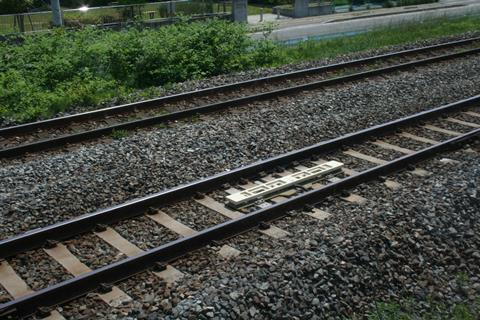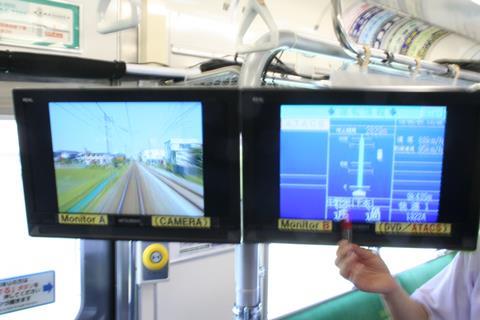
JAPAN: East Japan Railway has confirmed plans to install its ATACS radio-based train control on Tokyo suburban lines over the next decade, in order to support an expansion of driver-only and automatic train operation.
Announcing the timescale for implementation of ATO and ATACS on the Yamanote Loop and Keihin-Tohoku Line, JR East explained on December 7 that it was faced with the need to meet Sustainable Development Goals, reform its employees’ working patterns, and improve the economic performance of its suburban train services. The operator is looking to move eventually to Grade of Automation 3, replacing drivers by train attendants.
Introduction of the radio-based control system is expected to eliminate much of the existing lineside equipment for the operation of track circuits, signals and level crossings, which can be exposed to large temperature fluctuations, severe weather and excessive vibration. The railway points out that such equipment is a source of unreliability, is costly to acquire and labour-intensive to maintain.
ATACS development
The Advanced Train Administration & Communications System is a form of CBTC roughly equivalent to ETCS Level 3, with train position being determined by on-board equipment and digital radio communication rather than track circuits. In a form of moving-block operation, the train continually reports its position and receives an updated Limit of Moving Authority, allowing it to determine its braking curve in relation to other trains on the line. This allows trains to run safely at shorter headways than would be possible with fixed block signalling.
Development of technology began at the Railway Technical Research Institute in 1985, under the acronym CARAT (Computer And Radio Aided Train Control). The ATACS name was adopted in 1995. Initial tests were undertaken between September 1997 and February 1998 on a section of the Senseki Line between Nigatake and Higashi-Shiogama to the northeast of Sendai. After further testing between Nigatake and Tagajo a prototype system had been installed on all 18 trains used on the Senseki Line by July 2004.
The only lineside equipment required is a set of transponders in the track, positioned 1 km apart, operating with a 1·7 MHz uplink to the trains and a 245 Hz downlink to provide power for the transponders. Hitachi was responsible for the control centre equipment, transponders and radio base stations, while Mitsubishi supplied the onboard equipment.
The trains are fitted with odometers to measure the distance between the transponders, reporting their location to the control centre at 1 sec intervals. The system achieved a positioning accuracy of better than 900 mm, and following external evaluation, ATACS was deemed to meet the requirements of a safe train control system.
In early 2011 the equipment was installed on the whole of the Senseki Line between Aoba-dori and Higashi-Shiogama, with a view to starting commercial operation on March 27. However, several sections of the line were wrecked by the Great Tohoku Earthquake & Tsunami on March 11, and it was not until October 10 that regular operation could start with limited functionality. A temporary speed restriction function was added in December 2012 and a level crossing capability came into use in December 2014. This was subsequently deployed on 14 level crossings, reducing both the maintenance required and the time spent by traffic waiting at these crossings.

At present ATACS is in use on 18 km of the Senseki Line, with four ground controllers and eight base stations 3 km apart. Onboard equipment is fitted to 20 trains. By September 2016 the system had recorded an availability of 99·99999% availability, with only one incident involving a 10 sec radio interruption. Should a system failure occur, drivers are expected to run a maximum speed of 25 km/h, under instructions from the control centre at Miyagino depot in Sendai.
JR East’s first production implementation of ATACS went live on November 4 2017, covering the 23·5 km Saikyo Line between Omiya and Ikebukuro in the northern suburbs of Tokyo.
ATO and DOO implementation
The introduction of ATACS is intended to facilitate the expansion of automatic train operation, which JR East introduced for all-station stopping services on a 29·7 km section of the Joban line between Ayase and Toride from March 13 2021. This was the operator’s first deployment of ATO with commercial passenger-carrying trains.
With an ageing population reducing the available workforce, JR East is looking to introduce one-person operation on more lines in the Tokyo suburban area. The first to be equipped between 2025 and 2030 will be the busy inner-urban Yamanote Loop and the cross-city Keihin-Tohoku Line, from Omiya to Higashi-Kanagawa via Tokyo and Shinagawa.

JR East’s Negishi, Nambu and Yokohama lines, are also expected to switch to DOO during the same period, along with the remaining suburban section of the Joban Line. Installation of ATACS on these routes is expected to take place between 2028 and 2031.

















